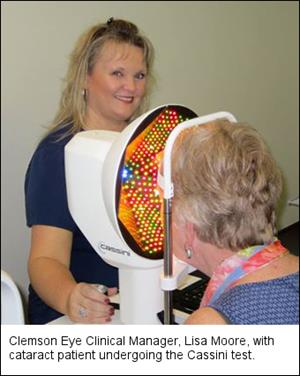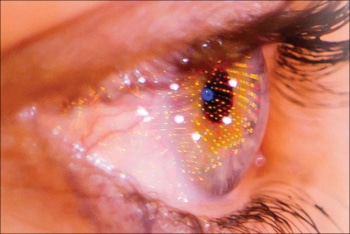Posted by: Clemson Eye in News

BY APRIL A. MORRIS – MAY 7, 2015
Source: Greenville Journal
Local practice uses new technology to measure corneas
Patients who have surgery to remove cataracts see a dramatic improvement in their vision – but how will they see for years afterward?
A new technology, Cassini, provides more accurate measurements of a patient’s cornea that can help ophthalmologists correct astigmatism during surgery and leave patients with even clearer vision.
Surgeons typically use a corneal topographer to measure the front surface of a patient’s cornea, said Dr. Joseph Parisi of Clemson Eye.

This machine uses a series of lighted rings and measures the reflection of the rings, he said. The measurement could be affected by changes in the tear film on the eye and by dry eyes.
An intraocular lens implant to correct the cataract would fit perfectly, but would not always correct a patient’s astigmatism, he said. The Cassini technology is a novel way of measuring the curvature of the eye and uses red-, yellow- and green-colored LEDs that map the front and back of the cornea, creating GPS-like coordinates for the surgeon, he said.
It gives “an accurate point-to-point location of curvature” that is not affected by moisture on the eye, Parisi said. The back of the cornea measurement gives the surgeon an even clearer picture of the shape of the eye, which allows a more accurate prescription on the new, implanted lens, he said.
In addition to the measurements for surgery, the Cassini technology can also be used as a corneal camera and detect conditions like an abnormal cornea, Parisi said, as well as document a patient’s tear film.
Clemson Eye was able to do a beta test of the Cassini before its launch, and found it “a great help in many, many patients,” Parisi said. The new information the machine provides may influence a doctor “to maybe change the way he treats patients,” he said. “So far we’ve been very happy with it.”